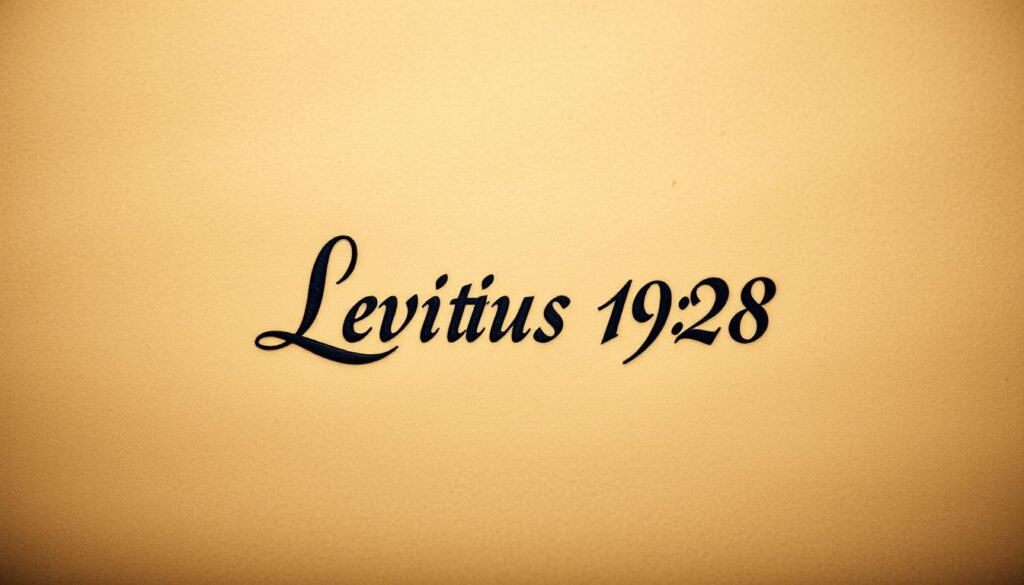
What if something as personal as body art could shape your spiritual journey? For decades, inked skin carried associations with rebellion or niche subcultures. Yet today, colorful designs grace arms, backs, and ankles across grocery stores, offices, and even church pews.
Modern culture’s embrace of tattoos has sparked lively conversations among believers. Like past debates over worship styles or attire choices, this topic reveals deeper questions about identity and devotion. While critics argue markings reflect worldly allegiance, Scripture focuses on matters of the heart.
Nearly 40% of young adults now sport at least one permanent design, making this more than theoretical. Your decision to get inked – or not – deserves thoughtful reflection rooted in biblical truth rather than fear or trends.
Key Takeaways
- Tattoo acceptance has shifted from counterculture to mainstream over five decades
- Faith communities debate body art like previous generational divides in worship
- Scriptural analysis shows salvation depends on Christ, not physical markings
- Over 35% of Americans under 30 have permanent skin artwork
- Personal convictions should align with biblical principles and spiritual discernment
Biblical Context and Historical Foundations

Ever wondered why Leviticus 19:28 mentions body marks? This ancient text states: “Do not cut your bodies for the dead or put tattoo marks on yourselves.” At first glance, it seems like a blanket ban – but cultural context changes everything.
Understanding Leviticus 19:28
The Hebrew phrase kĕtōbet qa’ăqa’ appears only here in Scripture. Scholars debate whether it means permanent tattoos or ritual body paint. Ancient Near Eastern cultures used skin markings for spiritual purposes – Egyptian mummies bore symbols of their gods, while Mesopotamian priests wore deity identifiers.
Archaeological finds reveal a key detail: People cut themselves during mourning pagan rituals. A Ugaritic text describes self-laceration practices for dying individuals. God specifically opposed these death-related ceremonies that honored false deities.
The Purpose Behind the Command
This law wasn’t about art – it protected Israel’s spiritual identity. Surrounding nations used body marks to:
- Display slave ownership
- Identify temple priests
- Connect with underworld spirits
By forbidding these practices, God created visual boundaries. The verse focuses on heart allegiance rather than skin decoration. Modern tattoos rarely carry these ancient religious meanings, making direct application tricky without historical understanding.
The Evolution of Tattoo Culture

Imagine walking into a church and spotting intricate body art peeking from under a preacher’s sleeve. This scene captures tattoo culture’s radical shift from naval bases and biker clubs to every corner of society. What began as sailor souvenirs and military insignias blossomed into a mainstream phenomenon by the 1970s. Today, nearly 40% of young adults wear permanent designs – a number that reshapes how we view self-expression.
From Anchors to Art Galleries
Early 20th-century tattoos served practical purposes. Sailors inked nautical stars for safe voyages, while soldiers marked their units. The counterculture movement flipped this script, transforming skin into canvases for rebellion. By the 1990s, celebrities and athletes normalized body art, making it a $1.6 billion industry. Unmarked skin now draws more stares than a floral sleeve at coffee shops.
Sacred Skin and Storytelling
Religious communities initially resisted this trend, associating ink with sin. But motivations shifted. A nurse might etch a semicolon for mental health advocacy. A pastor could honor a late parent with their favorite psalm. Clinical psychologist Vinita Mehta notes: “Modern designs often memorialize personal victories or loved ones.” Churches now debate whether these symbols enhance or hinder spiritual witness.
This cultural pivot leaves believers weighing artistic freedom against tradition. While some see tattoos as harmless creativity, others question their alignment with biblical values – a tension mirroring past debates over music styles or clothing.
can we go to heaven with tattoos

Staring at your ink, do you ever question its spiritual implications? Let’s settle this: salvation hinges on Christ’s sacrifice, not skin decorations. Eternal life comes through surrendered hearts, not unmarked bodies.
Scripture makes it clear: “People look at the outward appearance, but the Lord looks at the heart” (1 Samuel 16:7). Your ability to walk through heaven’s gates depends entirely on:
- Accepting Jesus as your Savior
- Living by faith, not works
- Cultivating a transformed mindset
While body art doesn’t block entering heaven, wisdom matters. A sleeve celebrating addiction recovery opens doors for meaningful conversations. That tribal design from your pre-faith days? It’s now part of your redemption story.
Three considerations for believers:
- New tattoos should align with godly values
- Existing designs can showcase personal transformation
- Motives matter more than the artwork itself
Rest assured – eternal security isn’t tattoo-dependent. Focus on maintaining a heart that beats for Christ, and let your skin tell secondary stories.
Biblical Interpretations and Modern Understandings

Have you ever noticed how some Bible verses spark more debate than others? Leviticus 19:28’s tattoo reference often gets isolated from its original context. The preceding verse forbids trimming beards – a common grooming practice today. This inconsistency reveals our need to distinguish between cultural commands and timeless principles.
Old Testament Laws vs. New Covenant Grace
Ancient Israel’s laws served specific purposes. The beard rule and tattoo prohibition helped separate God’s people from neighboring pagan rituals. Through Christ’s sacrifice, believers shifted from ceremonial observances to heart transformation. As theologian Michael Heiser notes: “The New Testament never reinstates these cultural markers as salvation requirements.”
Modern Christians eat shellfish and wear mixed fabrics without guilt – practices forbidden in the same Old Testament chapters. This shows how cultural context shapes our application of Scripture. Your choice about body art falls under Christian liberty rather than legalistic mandates.
Debates on Sinfulness and Personal Choice
While some claim tattoos sinful by nature, most designs today lack pagan connections. A cross inked on a wrist often signals faith, not idol worship. The real issue lies in motives: Is your getting tattoo about self-glorification or storytelling?
“Everything is permissible, but not everything is beneficial.”
This principle guides believers in gray areas. Consider how your choice affects spiritual growth and community witness. What edifies one person might distract another – wisdom matters more than ink.
Practical Considerations Before Getting Inked
What story will your skin tell in twenty years? Permanent body art requires more than momentary inspiration. Thoughtful planning helps align your decision with personal values and practical realities.
Evaluating Your Motives and Intentions
Why do you want get a tattoo? Some choose designs to honor loved ones or celebrate milestones. Others feel pressured by trends. A 2022 Pew Research study found 32% of first-time clients regretted impulsive choices. Ask yourself: Does this design reflect my authentic self or fleeting desires?
Health, Financial, and Lifestyle Implications
Getting tattooed involves more than picking a studio. Consider costs averaging $150-$450 per hour. Factor in aftercare products and potential touch-ups. Allergic reactions or infections occur in 6% of cases, per Johns Hopkins research. Certain careers still view visible ink unfavorably – plan placement carefully.
Before you get tattooed:
– Research artists’ hygiene certifications
– Budget for long-term maintenance
– Discuss designs with trusted mentors
Your skin deserves intentional storytelling. Make choices that resonate through seasons of life.
